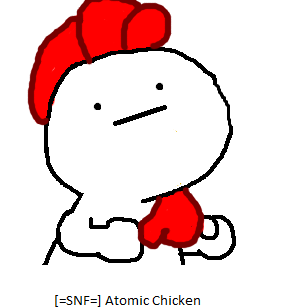Peter M Larson
age ~79
from Newark, OH
- Also known as:
-
- Peter Martin Larson
- Peter G Larson
- Peter M Baker
- Peter Beachler
- Susan Larson
- Phone and address:
- 273 Goosepond Rd #C, Newark, OH 43055
Peter Larson Phones & Addresses
-
s
- 273 Goosepond Rd #C, Newark, OH 43055
- 208 Beechwood Dr, Granville, OH 43023 • 7403211012
- 700 Mount Parnassus Dr, Granville, OH 43023 • 7403211012
- Fort Worth, TX
- 2606 Fair Ave, Bexley, OH 43209 • 6142354018
- 2376 Berwick Blvd, Columbus, OH 43209 • 6142372883
Work
-
Company:Larson products inc
-
Address:2844 Banwick Rd, Columbus, OH 43232
-
Phones:6142359100
-
Position:President
-
Industries:Surgical and Medical Instruments and Apparatus
Medicine Doctors

Peter R. Larson
view sourceSpecialties:
Orthopaedic Surgery
Work:
Twin Cities Orthopedics PATwin Cities Orthopedics
1701 Curv Crst Blvd W STE 104, Stillwater, MN 55082
6514398807 (phone), 6514390232 (fax)
Twin Cities Orthopedics PATwin Cities Orthopedics
1875 Woodwinds Dr STE 200, Saint Paul, MN 55125
6512752750 (phone), 6514390232 (fax)
Twin Cities Orthopedics
5803 Neal Ave N, Stillwater, MN 55082
6514398807 (phone), 6514390232 (fax)
1701 Curv Crst Blvd W STE 104, Stillwater, MN 55082
6514398807 (phone), 6514390232 (fax)
Twin Cities Orthopedics PATwin Cities Orthopedics
1875 Woodwinds Dr STE 200, Saint Paul, MN 55125
6512752750 (phone), 6514390232 (fax)
Twin Cities Orthopedics
5803 Neal Ave N, Stillwater, MN 55082
6514398807 (phone), 6514390232 (fax)
Languages:
English
Description:
Mr. Larson works in Oak Park Heights, MN and 2 other locations and specializes in Orthopaedic Surgery. Mr. Larson is affiliated with Fairview Lakes Medical Center, Hudson Hospital & Clinic, Lakeview Hospital, Osceola Medical Center, Saint Johns Hospital, Westfields Hospital & Clinic and Woodwinds Health Campus.

Peter John Larson
view sourceSpecialties:
Internal Medicine
Hematology
Emergency Medicine
Obstetrics & Gynecology
Pathology
Blood Banking & Transfusion Medicine
Hematology
Emergency Medicine
Obstetrics & Gynecology
Pathology
Blood Banking & Transfusion Medicine
Education:
University of North Carolina (1983)
Name / Title
Company / Classification
Phones & Addresses
President
Larson Products Inc
Surgical and Medical Instruments and Apparatus
Surgical and Medical Instruments and Apparatus
2844 Banwick Rd, Columbus, OH 43232
Website: larsonproducts.com
Website: larsonproducts.com
CEO
Larson Product Inc.
Elementary and Secondary Schools
Elementary and Secondary Schools
2606 Fair Ave., Columbus, OH 43209
Mbr-pres , President
Klarity Medical Products, LLC
Health/Allied Services · Mfg Surgical/Medical Instruments
Health/Allied Services · Mfg Surgical/Medical Instruments
80 Westgate Dr, Newark, OH 43055
THE NEWARK-GRANVILLE SYMPHONY ORCHESTRA, INC
Branch Manager, President
Larson Medical Products Inc
Warehouse · Surgical & Medical Instrument Mfg · Physicians & Surgeons Equip &
Warehouse · Surgical & Medical Instrument Mfg · Physicians & Surgeons Equip &
2844 Banwick Rd, Columbus, OH 43232
80 Westgate Dr, Newark, OH 43055
6142359100
80 Westgate Dr, Newark, OH 43055
6142359100
Us Patents
-
Gamma Radiation Treated Sheet Material For Use As Orthopedic Splints And Casts And The Like
view source -
US Patent:53785312, Jan 3, 1995
-
Filed:Jul 9, 1993
-
Appl. No.:8/089729
-
Inventors:Peter M. Larson - Bexley OH
Lester M. Larson - Sun City West AZ -
International Classification:A61F 504
A61L 1512
A61L 1514
C08J 524 -
US Classification:428255
-
Abstract:Orthopedic splint materials made with thermoplastic polyester, particularly poly (epsilon-caprolactone) with a molecular weight of over 5,000 and melting between 50. degree. C. and 100. degree. C. have improved properties when subjected to gamma radiation in the range from 0. 5 to 30 megarads.
-
Gamma Radiation Treated Material
view source -
US Patent:55408761, Jul 30, 1996
-
Filed:Jun 5, 1995
-
Appl. No.:8/462585
-
Inventors:Peter M. Larson - Bexley OH
Lester M. Larson - Sun City West AZ -
International Classification:B06B 102
-
US Classification:264479
-
Abstract:Materials and items made of thermoplastic polyesters, such as poly (epsilon-caprolactone), synthetic rubber, such as Transpolyisoprene and Neoprene, and natural rubber, such as balata have improved properties when subjected to gamma radiation in the range from 0. 5 to 30 megarads.
-
Moldable Splint And Method Of Using Same
view source -
US Patent:20160067078, Mar 10, 2016
-
Filed:Nov 12, 2015
-
Appl. No.:14/938983
-
Inventors:Peter M. Larson - Granville OH, US
-
International Classification:A61F 5/058
-
Abstract:A composite moldable splint and method for using the same is described. In some embodiments, the splint has at least a partially fluid-filled inner volume, which in some embodiments may include foam, rubber, water, or pelletized material, surrounded by a thermoplastic layer that is flexible and moldable when heated. The inner volume, which may include a thermoactive adhesive having differing viscosity characteristics at a plurality of temperatures, provides the ability to mold the cushion into a wide range of shapes and contours, such as when forming around a body part. The thermoplastic layer provides the ability of the cushion to be molded when heated, while the inner volume tends to maintain a shape, and allows the thermoplastic layer to stay in its formed shape as the cushion cools. The cushion may be used in a range of medical applications for stabilizing patients and body parts.
-
Immobilization System
view source -
US Patent:20150059765, Mar 5, 2015
-
Filed:Mar 3, 2014
-
Appl. No.:14/194940
-
Inventors:Peter M. Larson - Granville OH, US
-
International Classification:A61F 5/37
-
US Classification:128845
-
Abstract:An immobilization system for a body, or body part, is provided, having a fixed form support and one or more shells that generally form an outlining structure of the body part to be immobilized. A formable support, having minimal mass, is molded and interposed between the fixed form support and shells to form a closely fitted support for the body part. The shell or shells may be removed from the system after molding, so that patient comfort is improved and total mass of the system is reduced, without compromise of the degree of immobilization. A retention mask, which also may be molded to conform to the body or body part, may be utilized to further stabilize positioning of the system.
-
Moldable Splint And Method Of Using Same
view source -
US Patent:20150065932, Mar 5, 2015
-
Filed:Aug 27, 2013
-
Appl. No.:14/010816
-
Inventors:Peter M. Larson - Granville OH, US
-
International Classification:A61F 5/058
-
US Classification:602 12
-
Abstract:A composite moldable splint and method for using the same is described. In some embodiments, the splint has at least a partially fluid-filled inner volume, which in some embodiments may include foam, rubber, water, or pelletized material, surrounded by a thermoplastic layer that is flexible and moldable when heated. The thermoplastic layer may then be covered by a fabric or foam layer to provide comfort and to maintain overall dimensional stability when heated. The inner volume provides the ability to mold the cushion into a wide range of shapes and contours, such as when forming around a body part. The thermoplastic layer provides the ability of the cushion to be molded when heated, and to assume a rigid formed shape when the cushion cools. The cushion may be used in a range of medical applications for stabilizing patients and body parts.
Lawyers & Attorneys

Peter Larson - Lawyer
view sourceOffice:
Morgan, Lewis & Bockius LLP
Specialties:
Labor, Employment & Benefits
ISLN:
923674296
Admitted:
2013
University:
University of Michigan, B.A., 2006
Law School:
The George Washington University Law School, J.D., 2012
Googleplus

Peter Larson
Work:
Peter Larson Photo - Photographer (2010)
Education:
Ohio University - Commercial Photography
Tagline:
Photographer

Peter Larson
Work:
CTA Import & Service - Direktör (1993)
Education:
LHS - Citroën

Peter Larson
Education:
Colorado State University - Construction Management

Peter Larson
Education:
University of Illinois at Urbana-Champaign

Peter Larson
About:
This is not the Peter you are searching for. Move along.
Tagline:
Unwittingly, he trained a dophin to kill The President Of The United States.
Bragging Rights:
I enjoy giving Google all my personal information, thus making it easier for bill collectors to find me!

Peter Larson
Education:
University of Toledo
Tagline:
Ballin out of control

Peter Larson
Work:
Tango

Peter Larson
About:
Im playing a lot of Games ! Find me on Steam : Atomic Chicken
Tagline:
Im the Epic Chicken
Youtube
Plaxo

Peter Larson
view sourceDallas, Texas

Peter Larson
view sourceMinneapolis, MN.

Peter Larson
view sourceSelf

Peter Larson
view sourceQA Compliance Specialist at Teleflex Medical

Peter Larson
view sourcePolypol
Get Report for Peter M Larson from Newark, OH, age ~79





